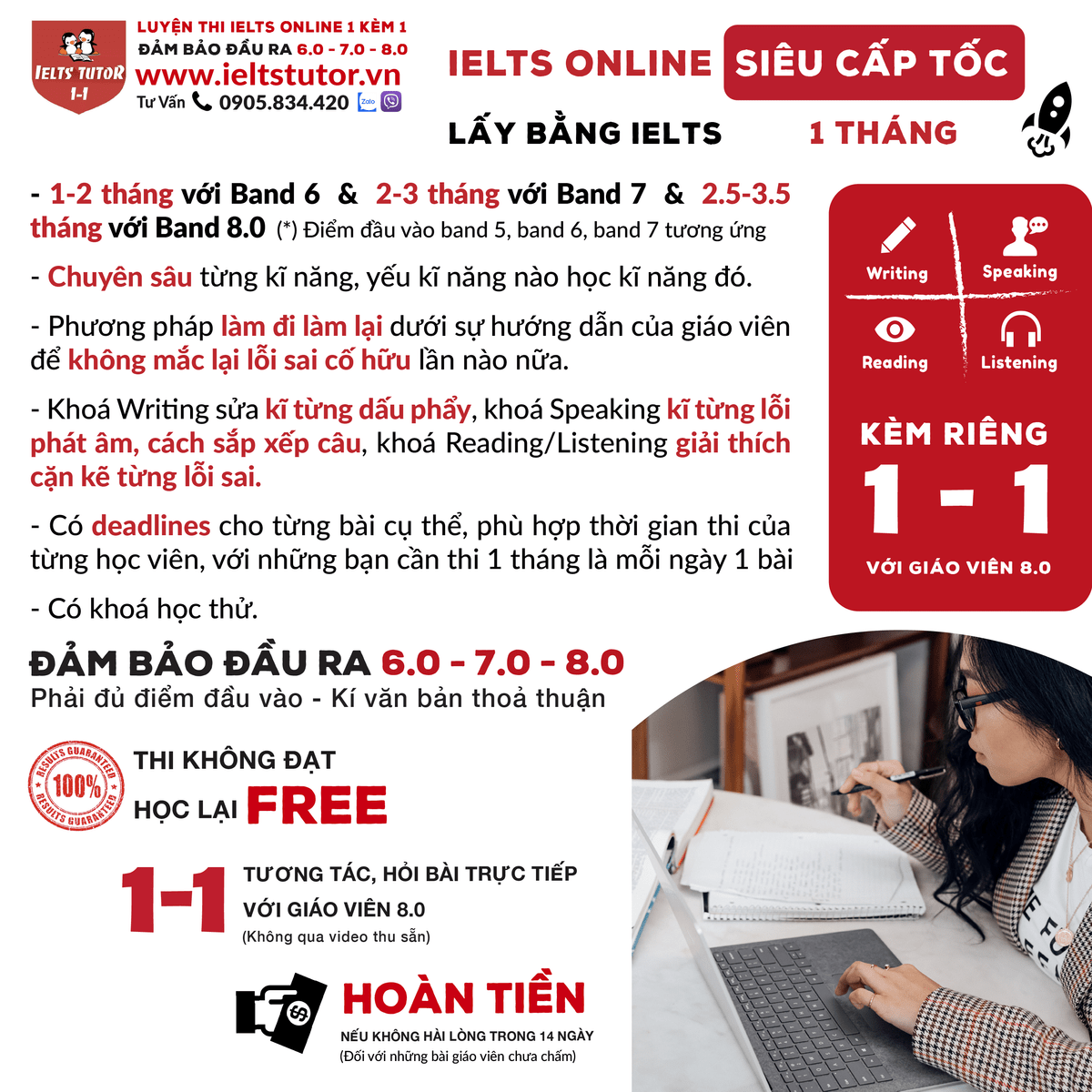IELTS TUTOR cung cấp 🔥Understanding symbols Answers with location - Đề luyện IELTS READING- Làm bài online format computer-based, kèm đáp án, dịch & giải thích từ vựng - cấu trúc ngữ pháp khó
I. Kiến thức liên quan
II. Làm bài online (kéo xuống cuối bài blog để xem giải thích từ vựng & cấu trúc cụ thể hơn)
📩 MN AI CHƯA CÓ ĐÁP ÁN FORECAST QUÝ MỚI PART 1-2-3 NHẮN ZL 0905834420 IELTS TUTOR GỬI FREE HẾT NHA
III. Understanding symbols: Đề luyện IELTS READING (IELTS Reading Practice Test)
READING PASSAGE 3
You should spend about 20 minutes on Questions 27-40, which are based on Reading Passage 3 below.
Understanding symbols
Judy DeLoache describes her research into the difficulties children experience with symbols
A About 20 years ago I had one of those wonderful moments when research takes an unexpected but fruitful turn. I had been studying toddler memory and was beginning a new experiment with two-and-a- half- and three-year-olds. For the project, I had built a model of a room that was in my laboratory. The real space contained basic furniture such as a couch and table. The miniature version was as similar as possible to its larger counterpart: the furniture was the same shape and material and was arranged in the same position. For the study, a child watched as we hid a miniature toy - a plastic dog we called Little Snoopy* - in the model. We then encouraged the child to find 'Big Snoopy, a large version of the toy hiding in the same place in his big room.'
B The three-year-olds were very successful. After they observed the small toy being placed behind the miniature couch, they ran into the room and found the large toy behind the real couch. But the two-and-a-half-year- olds failed abysmally. They cheerfully ran into the room to retrieve the large toy, but most had no idea where to look, even though they remembered where the tiny toy was hidden in the miniature room and could readily find it there.
C Their failure to use what they knew about the model to draw an inference about the real room indicated that they did not appreciate the relation between the model and the room. I realised my memory study was instead a study of symbolic understanding and that the children's failure might be telling us something about how and when children acquire the ability to understand that one object stands for another.>> Form đăng kí giải đề thi thật IELTS 4 kĩ năng kèm bài giải bộ đề 100 đề PART 2 IELTS SPEAKING quý đang thi (update hàng tuần) từ IELTS TUTOR
D The first type of symbolic object that infants and young children master is the picture. No symbols seem simpler to adults, but infants initially find pictures perplexing. The problem stems from the duality inherent in all symbolic objects: they are real in themselves and also representations of something else. A few years ago I became intrigued by anecdotes suggesting that infants do not appreciate this duality-stories of a baby trying to pick up a depicted object or to put on a hat from a picture book, for example.
E My colleagues and I decided to explore infants' understanding of pictures. In one study, we presented nine-month-olds with a brightly coloured picture of a toy and then tested their manual search for the toy. We placed the picture on the floor of a small room, and the infants sat on their parents' laps in front of the picture. We showed them the toy and then slid it behind the picture. The infants were then encouraged to retrieve the toy. Surprisingly, they consistently reached for the picture instead of the actual toy. They did this even though they were quite capable of picking up the toy when it was not behind the picture. It was as if the picture, as a representation, interfered with their ability to see it as a real object.
F We have since replicated this finding in several studies, and it seems that infants' difficulty with pictures is quite robust. It is not until about 18 months of age that children clearly understand that a picture is both an object and a representation of something else. This developmental progression is similar to what we observed with the scale model. The younger children treated the model as an interesting object in its own right, but they did not see it as a symbol for the room. The older children, in contrast, immediately understood the relation and used it to find the hidden toy.
G What, then, allows children to begin to understand symbols? We believe that a key factor is something called dual representation. To understand a symbol, a child must mentally represent both the symbol itself and its relation to the thing it stands for. For younger children, the concrete object is so salient that it overwhelms the child's ability to represent the abstract relation. As children develop, they become better at holding two representations in mind at once, which allows them to appreciate the symbolic nature of objects like models and pictures.
Questions 27-40
Questions 27-31
The reading passage has seven paragraphs, A-G.
Which paragraph contains the following information?
*Write the correct letter, A-G, in boxes 27-31 on your answer sheet.*
27 A description of the initial experiment that led to a change in the research focus.
28 The age at which children typically overcome a fundamental confusion about pictures.
29 The reason why very young children find symbolic objects challenging.
30 A summary of the different reactions of two age groups in the original test.
31 An example of a mistaken action taken by a baby when encountering a picture.
Questions 32-36
Do the following statements agree with the information given in Reading Passage 3?
*In boxes 32-36 on your answer sheet, write*
TRUE - if the statement agrees with the information
FALSE - if the statement contradicts the information
NOT GIVEN - if there is no information on this
32 The furniture in the model room was a smaller copy of the furniture in the real room.
33 In the initial experiment, most two-and-a-half-year-olds found the large toy without difficulty.
34 The researcher originally intended to study how children understand symbols.
35 In a follow-up experiment, infants were unable to pick up a toy when it was placed in front of a picture.>> IELTS TUTOR gợi ý tham khảo CẦN VIẾT & THU ÂM BAO NHIÊU BÀI ĐỂ ĐẠT 8.0 SPEAKING & 7.0 WRITING?
36 The concept of 'dual representation' is considered crucial to the development of symbolic understanding.
Questions 37-40
Complete the summary below.
Choose NO MORE THAN TWO WORDS from the passage for each answer.
Write your answers in boxes 37-40 on your answer sheet.
The Snoopy Experiment
Judy DeLoache conducted an experiment using a 37 .................... of a room. Children saw a small toy being hidden in this model and were then asked to locate a larger version of the toy in the actual room. While three-year-olds were generally successful, many 38 ....................-year-olds were not. Their failure suggested they did not grasp the 39 .................... between the model and the room. This insight shifted the focus of the research from memory to 40 .................... understanding.
IV. Dịch bài đọc Understanding symbols
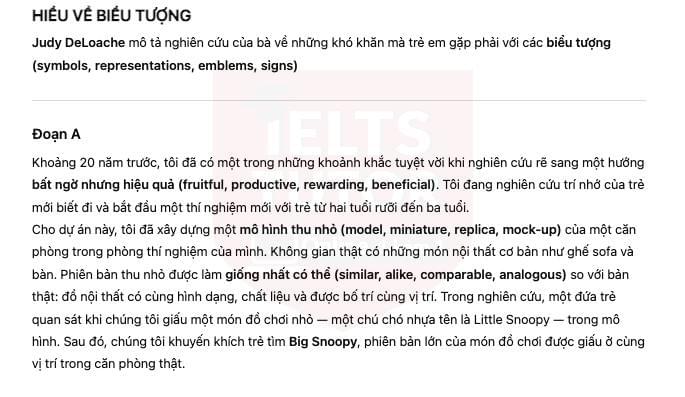
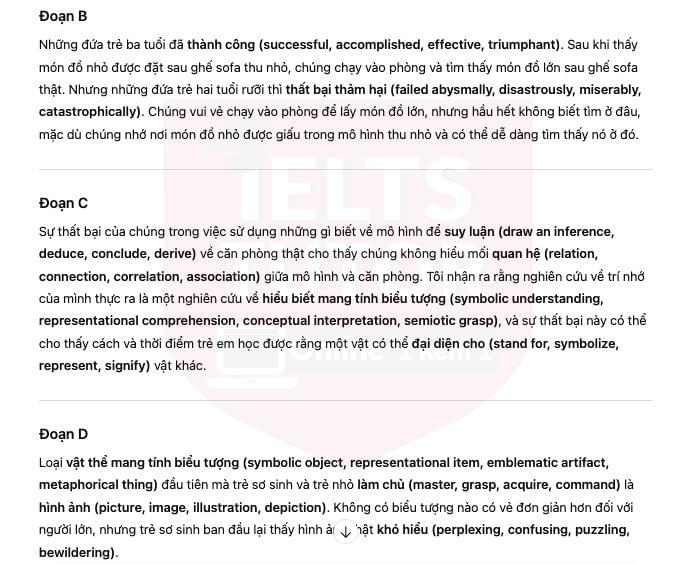
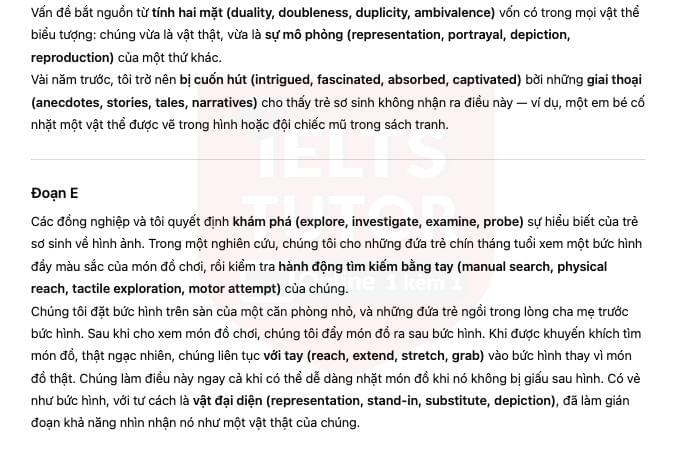
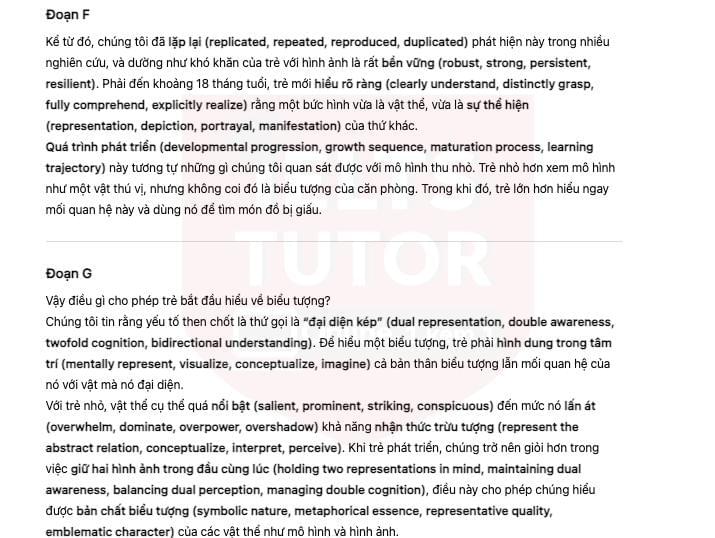
V. Giải thích từ vựng Understanding symbols
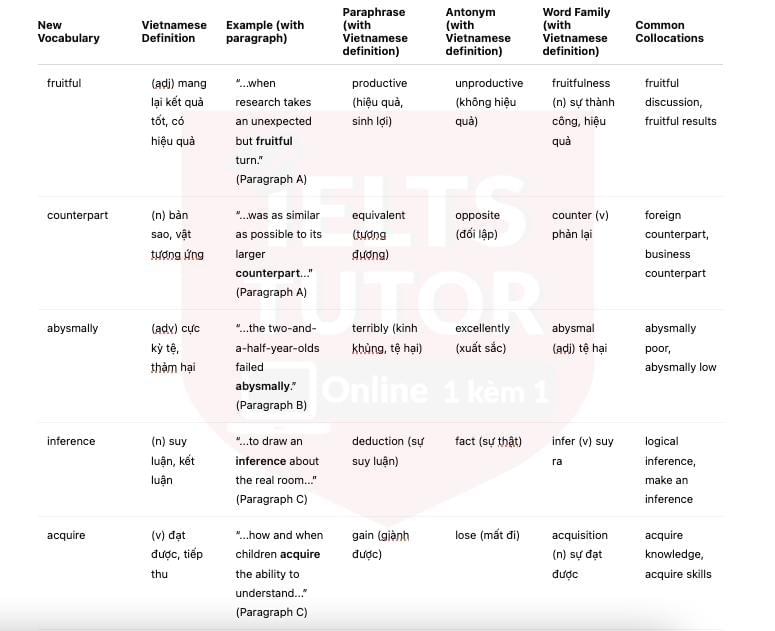

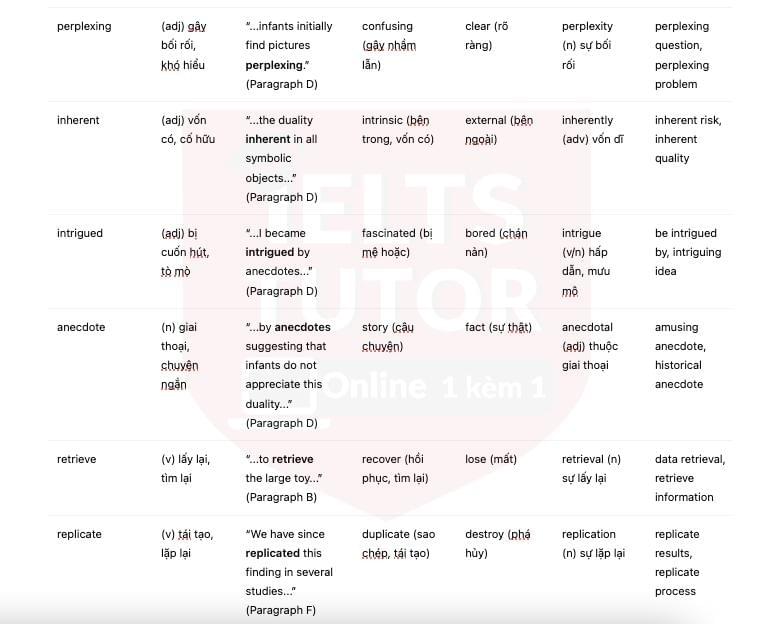
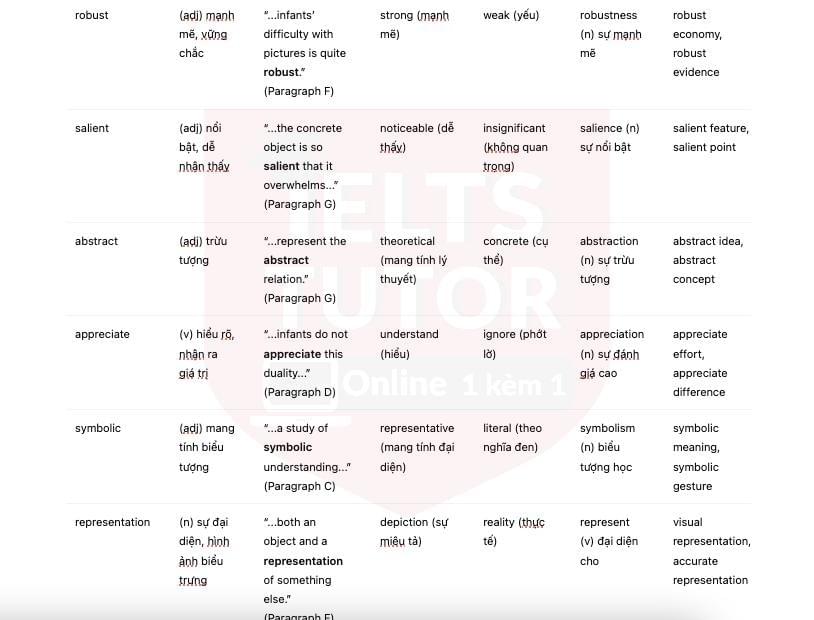
VI. Giải thích cấu trúc ngữ pháp khó Understanding symbols
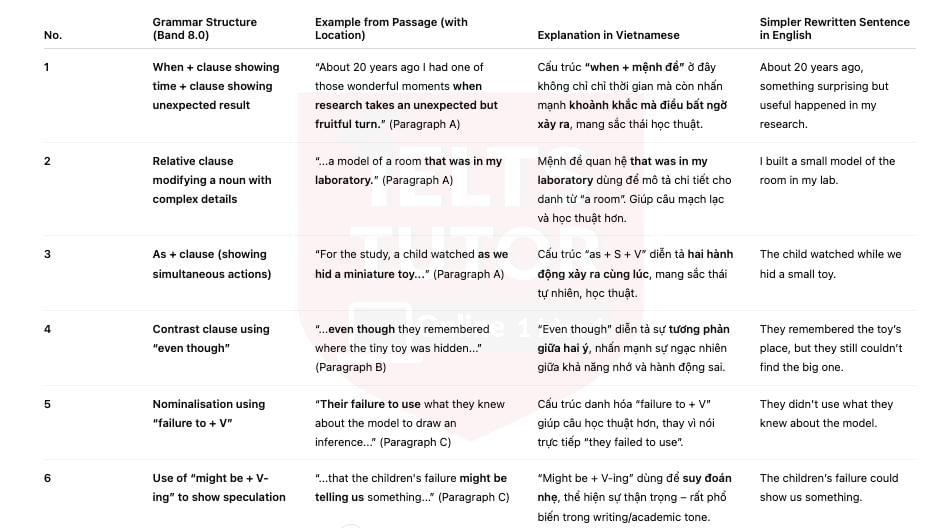
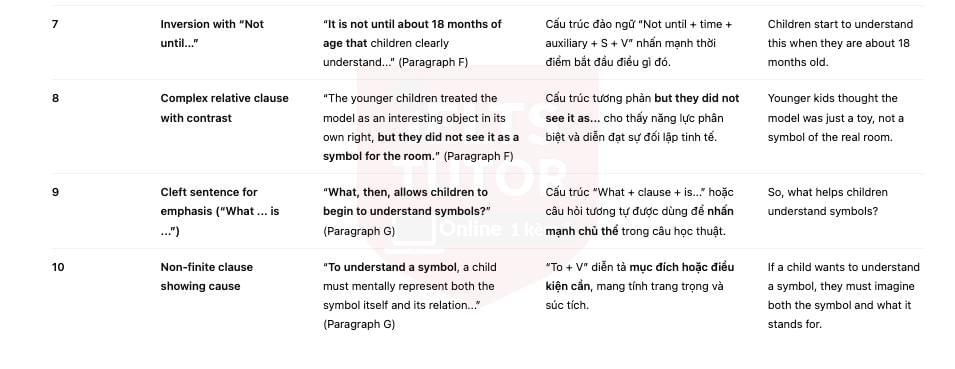
VII. Đáp án Understanding symbols
27 A
28 F
29 D
30 B
31 D
32 TRUE
33 FALSE
34 FALSE
35 FALSE
36 TRUE
37 model
38 two-and-a-half
39 relation
40 symbolic
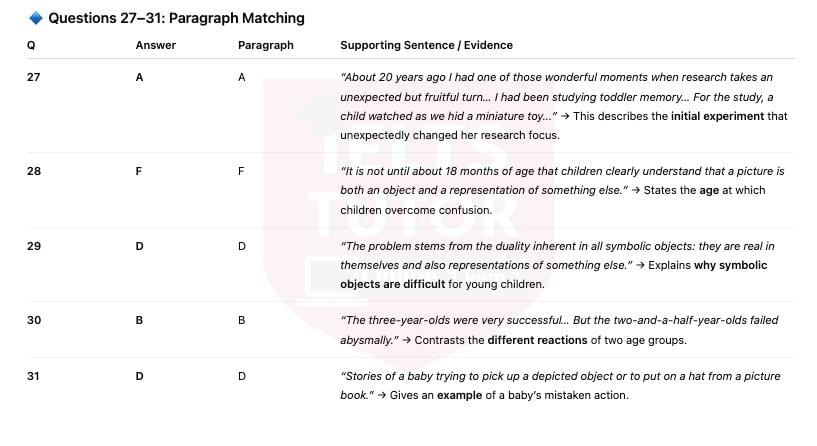
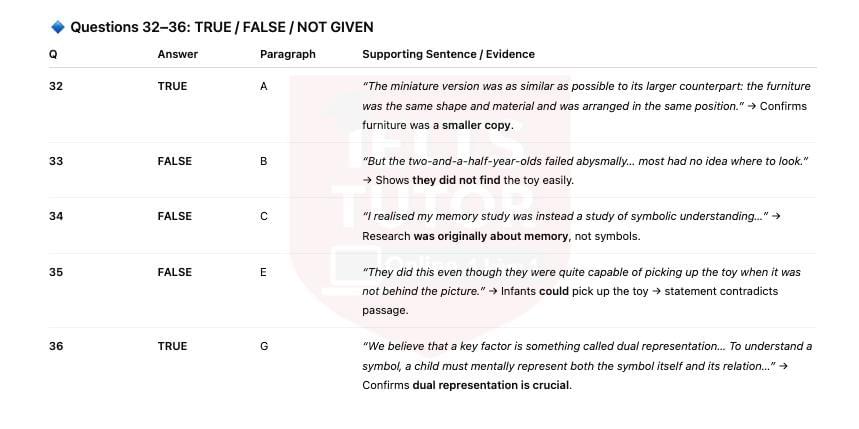

📩 MN AI CHƯA CÓ ĐÁP ÁN FORECAST QUÝ MỚI PART 1-2-3 NHẮN ZL 0905834420 IELTS TUTOR GỬI FREE HẾT NHA

Các khóa học IELTS online 1 kèm 1 - 100% cam kết đạt target 6.0 - 7.0 - 8.0 - Đảm bảo đầu ra - Thi không đạt, học lại FREE
>> Thành tích học sinh IELTS TUTOR với hàng ngàn feedback được cập nhật hàng ngày
